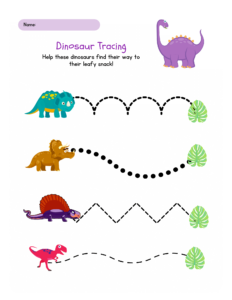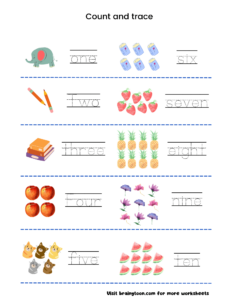Handwriting exercises for kindergarten kids at home or school
Handwriting exercises play a key role in helping kindergarten-aged children build the foundation for lifelong learning.
At this age, children are developing language skills, expanding their vocabulary, and learning how to express themselves. Well-designed handwriting activities strengthen these abilities in a fun and engaging way.
Effective exercises for kindergarteners
Before focusing on letters and numbers, children need strong fine motor control:
- Tracing activities: Start with dotted lines and progress to simple shapes.
- Connect-the-dots: Encourage number sequencing while creating pictures.
- Mazes: Build hand control and problem-solving skills.
Number tracing
Number tracing helps children both recognize and write numbers correctly, while also reinforcing early math skills.
- Begin with large, bold numbers.
- Gradually move to smaller print as skills improve.
Alphabet tracing
Learning letters is essential for reading and writing.
- Start with uppercase letters, which are easier to form.
- Provide dotted outlines to trace before moving to free writing.
- Introduce lowercase letters once uppercase forms are mastered.
Name writing practice
Writing their own name makes handwriting practice personal and meaningful.
- Let children trace their names first.
- Slowly reduce guidance as they gain confidence.
- Encourage proper spacing and letter formation.
Sensory writing activities
Adding a sensory element makes writing more fun and memorable:
- Sand trays: Trace letters in sand with fingers.
- Finger painting: Practice writing with paints for a playful experience.
- Playdough letters: Shape letters with clay for a hands-on activity.
Handwriting worksheets
As children’s skills grow, introduce structured worksheets:
- Use lined paper with a dotted middle line for guidance.
- Start with short words and gradually build up to phrases.
- Adjust difficulty as confidence increases.
Tips for successful handwriting practice
- Keep sessions short: Aim for 5–10 minutes to match young attention spans.
- Make it fun: Turn practice into games or use favorite characters.
- Celebrate effort: Praise progress, not just perfect results.
- Use proper tools: Thick pencils or crayons are easier for small hands.
- Stay consistent: Daily short practice is more effective than long, occasional sessions.
Handwriting practice in kindergarten sets the stage for strong literacy and academic growth. By keeping activities engaging, age-appropriate, and playful, parents and teachers can help children develop the confidence and skills they need to become successful, independent writers.






